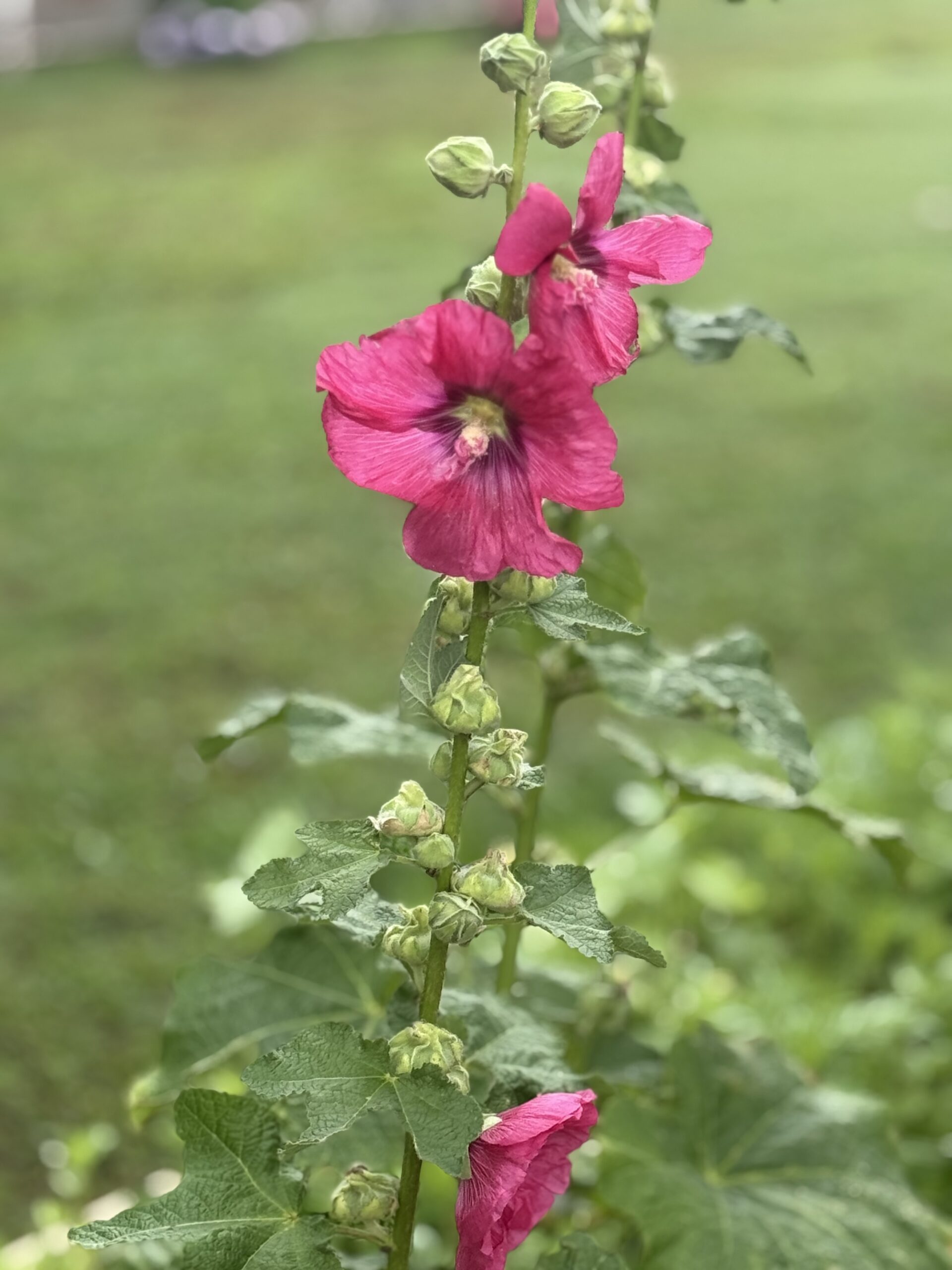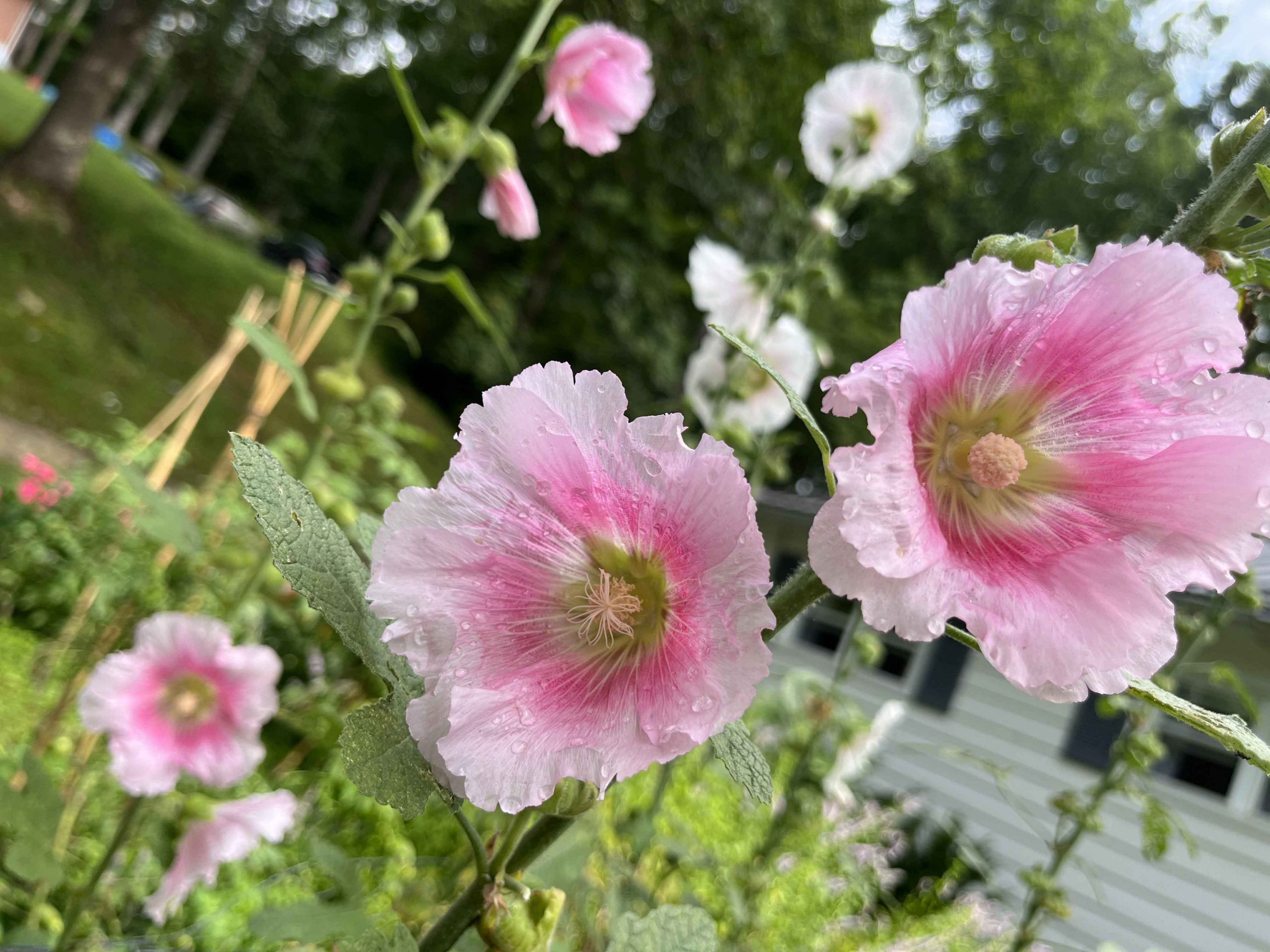About Hollyhocks
Hollyhocks epitomize the charm of cottage garden style. You’ve likely encountered them adorning barns, gracing the front of quaint cottage-style homes, or lining a white picket fence. Their distinctive feature lies in their impressive height, ranging from three to eight feet tall. Many prevalent varieties of hollyhocks follow a biennial life cycle, dedicating the first year to foliage growth and energy storage. In the second year, tall stalks shoot up, adorned with blooming flowers and forming seeds. However, there are also numerous varieties that act as short-lived perennials, flowering in their first year when planted early in spring or started indoors during winter.
When to Plant Hollyhock Seeds
Direct sow approximately one week before the threat of frost has passed. Hollyhocks can also be sown indoors approximately nine weeks before your final frost and transferred outdoors about two to three weeks after the final frost has passed.
Initiating hollyhocks from seed is a straightforward process, whether indoors or outdoors. For outdoor planting, sow seeds directly about a week before the last frost. It’s advisable to begin indoor seed planting approximately nine weeks before the last expected frost date.
Where to Plant Hollyhock Seeds
Plant hollyhocks in moist, rich, and well-draining soil that gets full sun exposure—though they can tolerate partial shade. One of the significant causes of hollyhock failure is planting in soil that is too dry.
How to Plant Hollyhock Seeds
Hollyhock seeds require light to germinate, so be careful not to cover them when planting. Learn more about germination light requirements here.
Hollyhocks may benefit from a 12-hour soak in warm water, but it is not needed. Direct sow outdoors onto the surface of rich, well draining soil and compress firmly, but do not cover. Space the seeds approximately two feet apart. Provide regular water and keep soil moist for starting hollyhocks.
Given hollyhocks’ extensive taproots, starting seeds indoors requires tall, individual pots to prevent damage during transplantation. Fill with rich, moist, well draining soil and provide regular waterings. Once the seedlings have developed, they can be safely moved outdoors two to three weeks after the last frost. Read about the hardening off process here.
How to Care for Hollyhocks
Hollyhocks are a short-lived perennial, tending to last about two to three years. This lifespan can be extended by removing flowers as soon as they fade. In non-tropical climates, you can cut your hollyhocks down and mulch in order to give them longer life as well. Hollyhocks can also be susceptible to rust, which will usually infect lower-growing leaves, but can spread upwards. Prevent rust by watering from below, and promoting good air circulation between your hollyhocks.
Due to their height, protect from damaging winds and provide support such as a fence, wall, trellis or stake. Hollyhocks will readily self-seed if left to their own devices, so locate them in an area where this won’t be a nuisance. Individual hollyhock flowers can be removed when they fade and entire stalks can be cut back to the base after flowering. This will prevent seed heads from forming and reseeding. Although, if you’d like to have seeds set for next spring, leave the flowers and a few stalks until the seeds have dropped. They’ll die back in winter and all stems and leaves should be cut back to the ground to prevent rust disease from overwintering.






